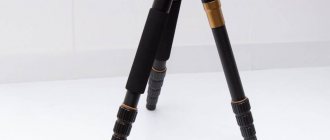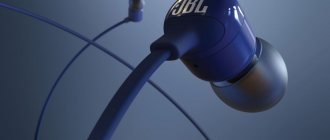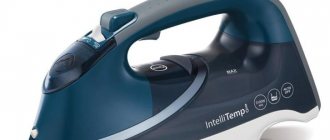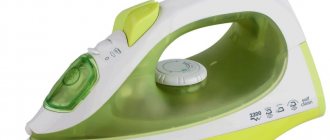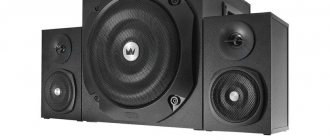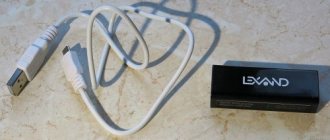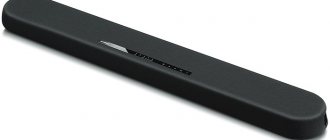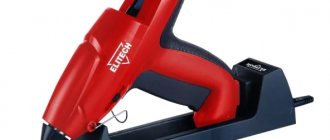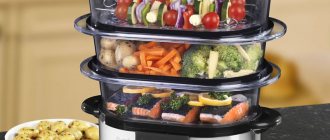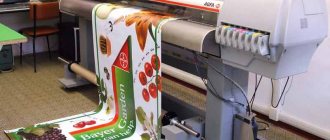What is a vibrating plate and why is it needed?
To compact soil, asphalt or other coverings, special devices are used - vibrating plates.
When constructing various objects, initial preparation and careful compaction of various types of bulk and cohesive materials (gravel, black soil, clay, sand, crushed stone, asphalt, paving slabs, etc.) are necessary. Tamping contributes to better water resistance, filling voids and, in general, improving the load-bearing properties of the soil.
If the initial layer is not prepared properly, this can subsequently lead to destruction of the foundation, subsidence of the working surface and other troubles.
The vibrating plate carefully and evenly compacts the soil surface. It is used on limited construction sites, complex repaired areas, where the use of large construction equipment is impractical.
For example, in such cases:
- When laying paving stones or paving slabs.
- For pothole repair of road surfaces.
- On a small site or area with a slope.
Compaction of soils by loading
Compaction of soils by loading
with the installation of
vertical drains
is carried out with
weak water-saturated silts, clays and loams
, which are in a fluid and fluid-plastic state, as well as
peats
.
The listed soil deposits have low water permeability.
embankment
plays the role of loading , and
vertical drains
accelerate the compaction process.
READ ALSO: Geodetic work in construction
Currently, in addition to sand drains, drains made of special porous cardboard, as well as plastic tapes in a paper casing, have been used.
It was previously noted that with the increase in the volume and pace of construction, and the increase in requirements for soil stability, the solution of such a complex problem as the purposeful artificial change of the foundations of buildings and structures in the direction necessary for humans acquires special importance.
Design and operating principle
Structurally, the vibration compactor has an electromechanical eccentric, which creates vibrational mechanical vibrations. Using a belt drive, torque from the engine is transmitted to a rigidly mounted eccentric. The resulting vibrations transmit vibration to the working metal base of the unit. The entire surface area of the slab acts on the compacted coating.
Expert opinion
Kuznetsov Vasily Stepanovich
Equipment for construction work is subject to increased reliability requirements. Therefore, the design of the vibrating plate should be simple, maintenance should be easy, and the operating principle should be clear.
Kinds
Vibrating plates can be divided into several types:
Vibrating plates: 1-Petrol 2-Diesel 3-Electric
By energy use
- Gasoline
An economical option, it is in greatest demand (prices are lower than diesel analogues). They can move freely around the work site (not tied to a power source, unlike electric vibrating plates), and are able to work in cold and hot weather.
Disadvantages : heavy weight, make a lot of noise during operation.
- Diesel
Easy to operate, reliable, durable, independent of the power source.
Disadvantages : heavy, very noisy during operation. They may not work well in the cold.
- Electrical
They are light weight, low noise, and environmentally friendly. Can be used indoors (since there is no internal combustion engine, there is no exhaust gas pollution).
Disadvantages : the working area is limited by the length of the power cable; are used less frequently, as additional electrical equipment is required.
By mode of transportation:
- Reversible
More maneuverable (possibility of reversing without turning); indispensable in narrow passages.
Disadvantages : heavy weight, high price.
- Progressive
They only move in the forward direction. Vibrating plates of this type are cheaper and lighter.
Disadvantages : Additional space is required for turning.
By weight:
- Lightweight (up to 75 kg) - used for compacting soil 10-15 cm thick (for finishing and landscaping work).
- Universal (75-90 kg).
- Medium weight (90-140 kg) - used for layer-by-layer compactions up to 35 cm thick.
- Heavy (from 200 kg or more).
Rating of the best: 5 proven models
We selected five models of modern vibrating plates from trusted manufacturers.
CHAMPION PC9045F
The linear vibratory plate is equipped with a 6.5 liter four-stroke gasoline engine. With. Impact force - 15 kN.
Refers to professional construction equipment.
Used for the following tasks:
- Road surface repair.
- Laying asphalt.
- Compacting crushed stone and sand.
Key Features:
- The engine is equipped with a critical oil level sensor. The sensor monitors the oil level in the engine crankcase; if there is not enough oil, the vibrating plate will not start.
- Recoil starter for starting.
- The compact design allows you to work in hard-to-reach places - near poles, in a trench, next to a curb or wall, etc.
- The vibrating plate is equipped with a 3.6 liter fuel tank.
- The maximum compacted area is 416 m2/h.
What users say:
- Excellent for working in confined spaces - where a roller cannot pass, a vibrating plate can pass freely;
- Starts great in cold weather;
- Easily moved by hand (does not require much effort);
- The handle is equipped with a mechanism that reduces the transmission of vibration to the operator's hands.
DDE VP160-HK
Reversible vibrating plate with Honda GX200 petrol engine. Impact force - 30.5 kN.
Key Features:
- High-performance vibrating plate equipped with a 6 hp motor.
- The powerful engine allows you to compact soil to a depth of up to 50 centimeters in 1 pass.
- Efficient transmission or selection of torque from the engine to the eccentric (carried out using a powerful 3-jaw clutch).
- The vibrator rotor is equipped with reinforced steel bushings, and the motor is mounted on a durable mount. The vibrating plate serves for a long time and reliably.
- There are transport wheels for easy movement.
What users say:
- The engine has a long service life.
- High quality materials from which the device is made.
- Convenient to use.
RedVerg RD-29155
Straight-line vibrating plate with a four-stroke gasoline engine. Engine power - 6.5 hp, impact force - 13 kN.
Key Features:
- The RedVerg Vibrating Plate has a durable base made from thick sheet of stamped steel.
- The protective cover prevents foreign objects from entering the drive belts.
- Equipped with a soft handle that dampens vibrations.
- The package includes a polyurethane pad - it allows you to carefully lay paving stones or paving stones.
- There is an irrigation system - an additional water tank, with which you can moisten the surface under the slab when laying asphalt.
What users say:
- Easy to manage.
- The best option in terms of price/quality ratio.
Elitech PVT 60 BVL
Petrol vibrating plate with a reliable four-stroke engine. Power - 6.5 hp, centrifugal force - 10.5 kN.
Key Features:
- The vibrating plate engine of this model is installed on a reinforced frame.
- Works without interruption in extreme heat, as well as in frost. The full temperature range is from -10 to +40 °C.
- The device is equipped with an impact-resistant casing to protect the belt transmission.
- The vibrating plate is equipped with an anti-vibration system. Reduces the negative impact of vibration on the engine and extends its service life.
- There is an irrigation system with a 10 liter tank.
- Ergonomic control handle. Conveniently folds for storage or transportation.
- The set includes transport wheels for easy movement around the site.
What users say:
- Easy to start.
- Good build quality.
- One of the disadvantages is that vibration can cause the bolts of the transport wheels to come loose.
CHAMPION PC5431F
Compact petrol vibrating plate of linear type. Equipped with a four-stroke engine, power - 2.3 hp, impact force - 8.2 kN.
Key Features:
- Vibration frequency - 5140 beats per minute, compaction depth - 200 millimeters.
- The body is made of impact-resistant plastic. Provides reliable protection of the actuators of the device from impacts of crushed stone and small stones, as well as from dust.
- The vibrating plate is equipped with a special shock absorption system that absorbs vibrations well. Thanks to this system, engine parts wear less and last longer.
- There is an engine oil level sensor.
- Comfortable handle. It can be adjusted in height; all device controls are located on the handle.
What users say:
- Compact and lightweight vibrating plate, easy to use and transport.
- Does its job perfectly.
Features of device care
In order for the vibrating plate to serve for a long time, you need to adhere to the manufacturer’s recommendations, follow all instructions and carry out scheduled maintenance (maintenance) in a timely manner.
Here are some recommendations for caring for vibrating plates:
- It is necessary to monitor the condition of the filter element, clean it or replace it in a timely manner.
- Use quality oils and fuel. Check the oil level in the engine and gearbox regularly. Replace promptly according to instructions.
- Before starting to idle, it is advisable to warm up the engine for 5-10 minutes. It is especially important to do this at low ambient temperatures.
Expert opinion
Kuznetsov Vasily Stepanovich
During operation, you need to treat the device with care and perform only feasible tasks. It is important to monitor the temperature of the engine and, if necessary, take rest breaks and turn off the device.
Prepare the timber
Saw off the ends of the workpiece according to the dimensions exactly at right angles. Using a plane, adjust the plane of the lower end of the beam to a square. Remove 5 mm wide chamfers from sharp edges.
Preparing timber for tamping.
Decide how high-quality a finish you want. Before painting, the block will have to be sharpened and sanded. When a beautiful look is not needed, it is enough to clean the surface a little so that there are no splinters.
How to choose the best one?
Before choosing and purchasing a vibrating plate, pay attention to the following details:
- Technical characteristics, manufacturer's documentation;
- The size of the base plate directly affects the strength of vibration. A powerful apparatus with a wide plate moves faster. If the working surface is small, you get a powerful and more durable unit, but productivity will decrease.
- The design of the working part of the slab is a relief and heavy slab suitable for working on soil of strong and medium flowability; a smooth, lightweight slab is ideal for asphalt.
- Vibration frequency (number of repetitions) - the more often the vibrations, the better the compaction.
- Vibration amplitude (impact force) - the stronger the impact on the surface, the more powerful the unit and the greater the depth of soil compaction.
- Productivity is the ability of a unit to produce a certain amount of work. The surface processing speed depends on this parameter.
- Economy - fuel or electrical energy consumption is an important parameter, as it affects the payback of the device.
- Availability of an irrigation system - if there is such a system, it is more convenient to work. Viscous soil does not stick to the working plate of the unit, and the compaction is better.
- Reversing the engine is necessary when working in narrow passages and trenches; in other cases, there is no point in overpaying for this function.
GOST
For vibrating compaction plates, the general technical specifications are standardized by GOST 31552-2012, published in August 2013.
Standard machines of this type are accompanied by regulatory documents, which indicate not only all the technical characteristics of the mechanism itself, but also the compaction depth for various types of materials.
Marking
The GOST 31552-2012 standard recommends that manufacturers of vibrating plates use markings with specific indexing, which is a structure of the form PVUH–Y–Z–H, where:
- PVU – vibrating compaction plate.
- X – mode of movement (SR – self-propelled reversible, SO – self-propelled single-pass).
- Y – operating weight, rounded to the nearest 10 kg.
- Z – width of the working surface in millimeters.
- N – serial number of the model.
Marking example:
A self-propelled reversible vehicle of the third model with a slab 0.5 m wide and weighing 147 kg will be marked as PVUSR-150-500-03.
